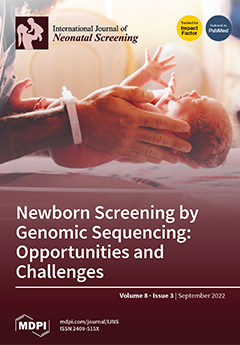Open AccessArticle
Experience of the NPC Brazil Network with a Comprehensive Program for the Screening and Diagnosis of Niemann-Pick Disease Type C
by
Francyne Kubaski, Alberto Burlina, Giulia Polo, Danilo Pereira, Zackary M. Herbst, Camilo Silva, Franciele B. Trapp, Kristiane Michelin-Tirelli, Franciele F. Lopes, Maira G. Burin, Ana Carolina Brusius-Facchin, Alice B. O. Netto, Larissa Faqueti, Gabrielle D. Iop, Edina Poletto and Roberto Giugliani
Cited by 5 | Viewed by 3439
Abstract
Niemann-Pick disease type C (NPC) is a lysosomal disorder caused by impaired cholesterol metabolism. Levels of lysosphingomyelin 509 (LysoSM509) have been shown elevated in dried blood spots (DBS) of NPC and acid sphingomyelinase deficiency patients. In this study, we report our experience using
[...] Read more.
Niemann-Pick disease type C (NPC) is a lysosomal disorder caused by impaired cholesterol metabolism. Levels of lysosphingomyelin 509 (LysoSM509) have been shown elevated in dried blood spots (DBS) of NPC and acid sphingomyelinase deficiency patients. In this study, we report our experience using a two-tier approach (1st tier is the quantification of lysoSM509 by ultra-performance liquid chromatography tandem mass spectrometry followed by the 2nd tier with next-generation sequencing of the
NPC1 and
NPC2 genes). DBS samples from 450 suspected patients were received by the NPC Brazil network. Of these, 33 samples had elevated levels of lysoSM509, and in 25 of them, variants classified as pathogenic, likely pathogenic, or of unknown significance were identified in the
NPC1 or
NPC2 genes by next-generation sequencing. The quantification of lysoSM509 in DBS as a first-tier test for the diagnosis of NPC followed by molecular analysis of the
NPC1 and
NPC2 genes almost doubled the detection rate when compared to the performance of chitotriosidase activity as a first-tier biomarker, and it could likely be increased with the addition of a third tier with MLPA of the two genes involved. This strategy seems suitable for the neonatal screening (NBS) of NPC if this disease is eventually adopted by NBS programs.
Full article
►▼
Show Figures






